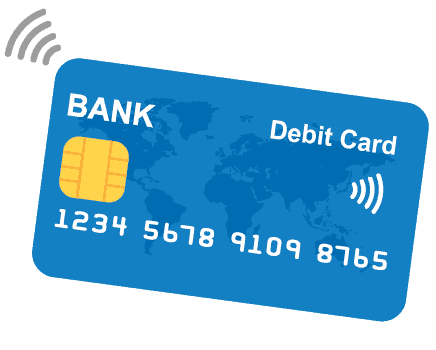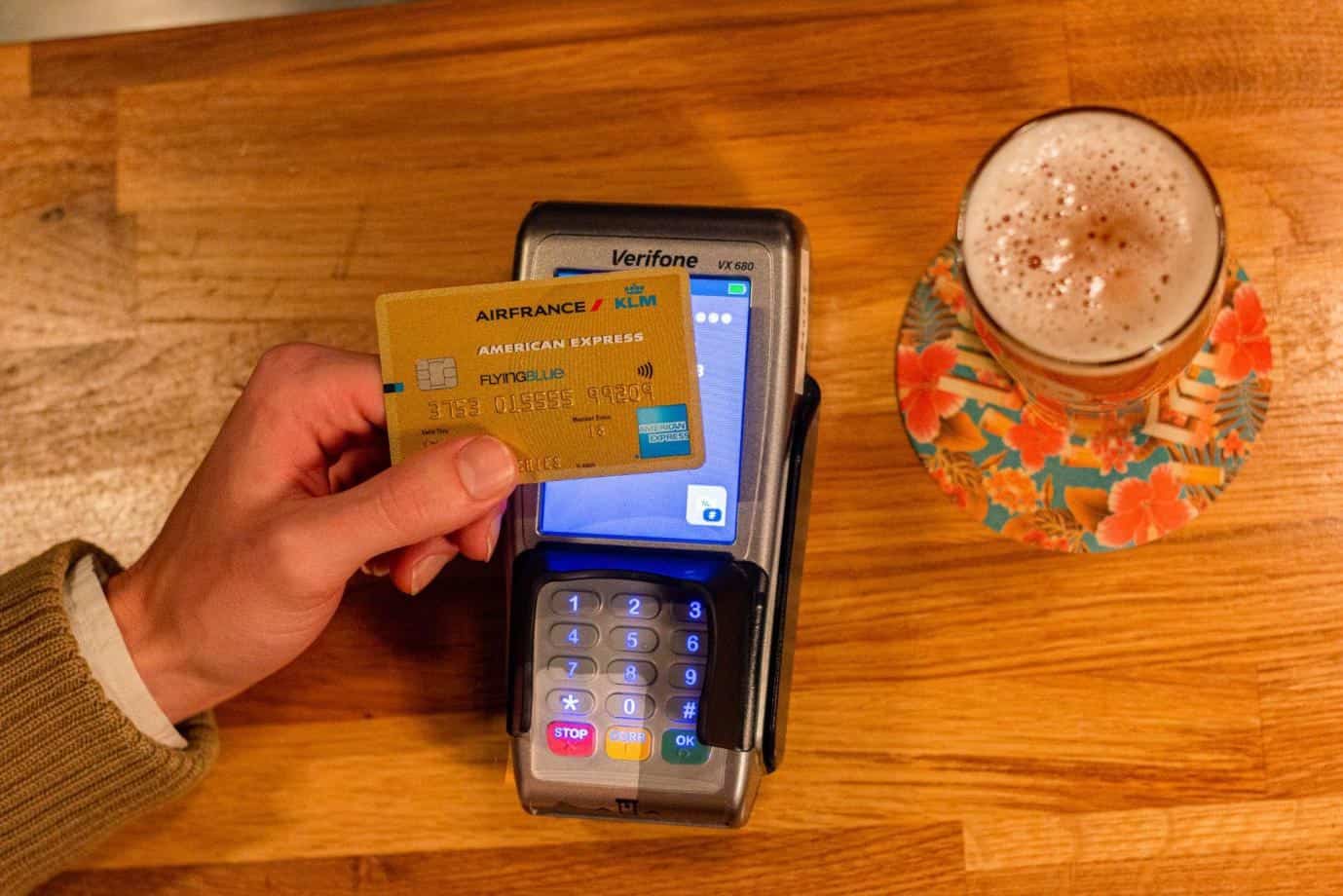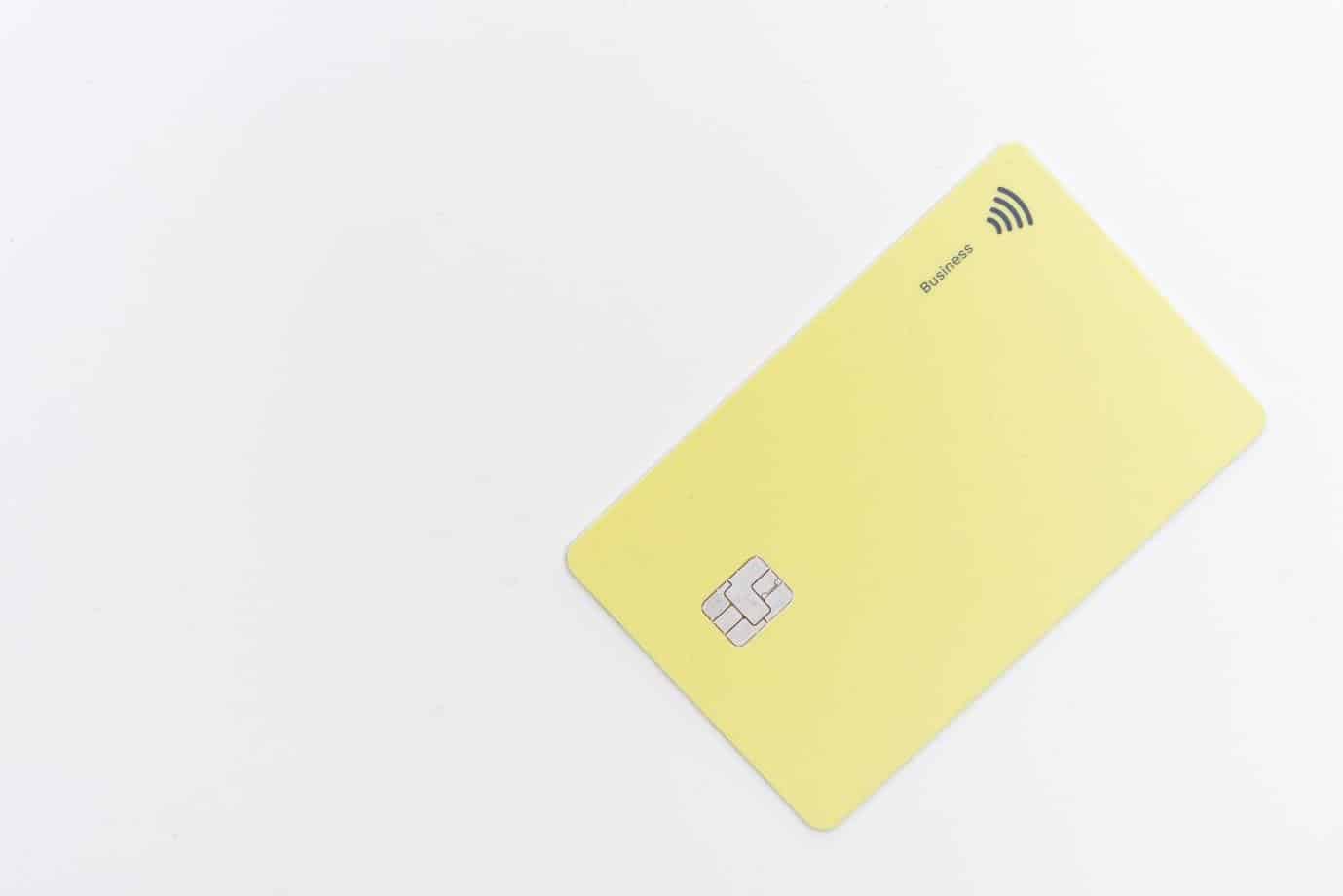One of the most important aspects that a traveler looks for in a country or city is a convenient commute.
Thankfully, getting around London is made easy thanks to its wide network of public transportation and its simple way of paying for a fare.
You have probably heard about Oyster Cards and Travelcards as popular modes of payment in public transportation.
However, what if you don’t have one? What other ways can you pay for your fare in case you run out of credit, you lose your card, or it expires?
Fortunately, there is still another effortless way to pay for your fare without having the need to buy a card – and that is a Contactless Card.
Want to find out which payment method is suitable for London transportations? I suggest reading Visitor Oyster Card Vs Oyster Card Vs Travel Card Vs Contactless Card to help you decide which card is best for you.
If you are a frequent traveler, you probably need to know about the benefits of using a Contactless Card. It is secure, simple to use, and fast when paying transportation fares.
A Contactless Card is another type of card using pay-as-you-go technology, promising a hassle-free commute.

This Contactless Card guide guides you through the process of using it, fares, and many more.
Here’s what you will read about:
- What Is a Contactless Card
- Where Is Contactless Card Accepted
- How Much Does TfL Charge on Contactless
- How Does Contactless Work on the Tube, Buses, and Other Transportation
- How to Manage a Contactless Card Account
- Reasons Why Your Contactless Card May Not Work
- Penalties and Refunds on Contactless Cards
- Alternatives for Contactless Cards
- Frequently Asked Questions

(Photo by CardMapr.nl from Unsplash)
Contents
- 1 What Is a Contactless Card
- 2 Where Is Contactless Card Accepted
- 3 How Much Does TfL Charge on Contactless
- 4 How Does Contactless Work on the Tube, Buses, and Other Transportation
- 5 Penalties and Refunds on Contactless Cards
- 6 How to Manage a Contactless Card Account
- 7 Alternatives for Contactless Cards
- 8 Reasons Why Your Contactless Card May Not Work
- 9 Frequently Asked Questions
- 9.1 Can you use contactless on the Tube?
- 9.2 Do You Need to Register Contactless Card for Tube?
- 9.3 Can I add Oyster Card to Apple Wallet instead of a contactless bank card?
- 9.4 Can I add Oyster Card to Google Pay instead of a contactless bank card?
- 9.5 Is Contactless Card better than an Oyster Card?
- 9.6 Can I add a Travelcard to a Contactless Card?
- 9.7 Can I get discounts and special offers with a Contactless Card?
- 9.8 Is it cheaper to travel with a Contactless Card than an Oyster Card?
- 10 Wrapping Up
What Is a Contactless Card
Contactless technology allows you to pay without the need to physically touch or insert your card into a card reader.
By just tapping or hovering over a card reader, you will be able to pay instantly. Most debit cards and credit cards are equipped with contactless technology.
To know if your bank card has contactless technology, check if it has a contactless payment symbol. The symbol has four curved lines, making it look like a signal. Here is what it would look like on a bank card.

(Photo by Markus Winkler from Pixabay)
Does your bank card have a Contactless symbol? If yes, you can effortlessly use it to pay for your fare at most London public transportation.
Most non-UK bank cards are accepted as long as they are American Express (AMEX), MasterCard, Maestro, Visa, or V PAY.
However, keep in mind that not all bank cards may work in the UK. Thus, it is best to check with your bank if you can use it as a Contactless Card in the UK.
It is better to have an Oyster Card ready as a backup in case your card does not work.
Where Is Contactless Card Accepted
Contactless Cards are used as a pay as you go cards on most public transportation:
- Bus
- Tram
- Tube
- DLR
- London Overground
- Elizabeth line
- London Cable Car
- Thames Clippers River Buses
- National Rail services
For London buses Contactless Card option, you can use the card on most buses except non-TfL route 477.
If using Contactless payment on trains like the National Rail services, you can use it for standard class travel at specific stations with a contactless option or stations between West Drayton and Reading.
Contactless payment on Tube is possible for all stations by tapping your Contactless Card twice, one going in and one going out.
How Much Does TfL Charge on Contactless
Single Fare Rate
You are charged an adult rate fare on all Contactless Card payments, which also includes international transaction fees for non-UK bank cards.
The amount of additional international transaction fees depends on your bank issuer. You can pay for your fare as a single fare or with a cap.
The total cost of your commute depends on how far you are going. To know about your fare ahead of time, use the single fare finder of Transport for London (TfL).
Indicate the station you are coming from and where you are going. Then, choose the type of passenger traveling and click “show single fares”.
For instance, if you are traveling within the same zone from Bond Street Underground Station (Zone 1) to St. Paul’s Underground Station (Zone 1), it costs £2.50 for Contactless and Oyster Cards and £6.30 for cash payment.
However, for two different zones such as Bond Street Underground Station (Zone 1) going to Bethnal Green Underground Station (Zone 2), it costs £3.20 (Peak hours) or £2.60 (Off Peak hours) for Contactless and Oyster Cards and £6.30 for cash payment.
Pay as you go Caps
All transactions made on TfL public transportation can be seen on your bank statement and may be indicated as Travel charges, Travel refunds, Unpaid fares, or tfl.gov.uk/cp.
Aside from single fare payment, you can always cap your fare and keep traveling until your total fare reaches the cap amount. The capping system helps you stay within your budget and keep track of your payments.
You can put a cap per day or per week within your selected zones. Choose between Daily Peak cap, Daily Off Peak cap, or Weekly cap from Monday to Sunday. A Daily cap is between 4:30 am to 4:29 am the next morning.
Peak fares are charged from Monday to Friday from 6:30 am to 9:30 am and from 4:00 pm to 7:00 pm. Off-peak hours are from Monday to Friday, between 9:31 am and 3:59 pm, and between 7:01 pm and 6:29 am the next day.
Moreover, if you travel to Zone 1 from a different zone from 4:00 pm to 7:00 pm on the weekdays, it is also included in the Off-peak hours.
| Fare | Day | Time |
| Peak fares
|
Monday to Friday | 6:30 am to 9:30 am
4:00 pm to 7:00 pm |
| Off Peak fares | Monday to Friday | 9:31 am to 3:59 pm
7:01 pm to 6:29 am the next day |
| Off peak (Traveling to Zone 1 from a different zone) | Monday to Friday | 4:00 pm to 7:00 pm |
The table below shows the Pay as you go cap prices for Daily Peak, Daily Off Peak, and Weekly Cap from Zone 1 to Zone 9.
| Zone | Pay as you go caps | ||
| Daily Peak Cap | Daily Off Peak Cap | Weekly Cap (Monday to Sunday) | |
| Zones 1 only | £7.70 | £7.70 | £38.40 |
| Zones 1-2 | £7.70 | £7.70 | £38.40 |
| Zones 1-3 | £9.00 | £9.00 | £45.20 |
| Zones 1-4 | £11.00 | £11.00 | £55.20 |
| Zones 1-5 | £13.10 | £13.10 | £65.70 |
| Zones 1-6 | £14.10 | £14.10 | £70.30 |
| Zones 1-7 | £15.30 | £14.10 | £76.50 |
| Zones 1-8 | £18.10 | £14.10 | £90.30 |
| Zones 1-9 | £20.00 | £14.10 | £100.20 |
| Zone 2 only | £7.70 | £7.70 | £28.80 |
| Zones 2-3 | £9.00 | £9.00 | £28.80 |
| Zones 2-4 | £11.00 | £11.00 | £31.90 |
| Zones 2-5 | £13.10 | £13.10 | £38.20 |
| Zones 2-6 | £14.10 | £14.10 | £48.10 |
| Zones 2-7 | £15.30 | £14.10 | £49.90 |
| Zones 2-8 | £18.10 | £14.10 | £67.90 |
| Zones 2-9 | £20.00 | £14.10 | £67.90 |
| Zone 3 only | £9.00 | £9.00 | £28.80 |
| Zones 3-4 | £11.00 | £11.00 | £28.80 |
| Zones 3-5 | £13.10 | £13.10 | £31.90 |
| Zones 3-6 | £14.10 | £14.10 | £38.20 |
| Zones 3-7 | £15.30 | £14.10 | £49.90 |
| Zones 3-8 | £18.10 | £14.10 | £67.90 |
| Zones 3-9 | £20.00 | £14.10 | £67.90 |
| Zone 4 only | £11.00 | £11.00 | £28.80 |
| Zones 4-5 | £13.10 | £13.10 | £28.80 |
| Zones 4-6 | £14.10 | £14.10 | £31.90 |
| Zones 4-7 | £15.30 | £14.10 | £36.10 |
| Zones 4-8 | £18.10 | £14.10 | £60.80 |
| Zones 4-9 | £20.00 | £14.10 | £60.80 |
| Zone 5 only | £13.10 | £13.10 | £28.80 |
| Zones 5-6 | £14.10 | £14.10 | £28.80 |
| Zones 5-7 | £15.30 | £14.10 | £36.10 |
| Zones 5-8 | £18.10 | £14.10 | £60.80 |
| Zones 5-9 | £20.00 | £14.10 | £60.80 |
| Zone 6 only | £14.10 | £14.10 | £28.80 |
| Zones 6-7 | £15.30 | £14.10 | £36.10 |
| Zones 6-8 | £18.10 | £14.10 | £60.80 |
| Zones 6-9 | £20.00 | £14.10 | £60.80 |
| Zone 7 only | £15.30 | £14.10 | £36.10 |
| Zones 7-8 | £18.10 | £14.10 | £60.80 |
| Zones 7-9 | £20.00 | £14.10 | £60.80 |
| Zone 8 only | £18.10 | £14.10 | £60.80 |
| Zones 8-9 | £20.00 | £14.10 | £60.80 |
For buses and trams alone, the rate is different depending on the type of payment and passenger.
Traveling as an adult using pay-as-you-go costs £1.65. You can also register for a Daily cap of £4.95 or a Weekly cap of £23.30.
For other passenger types, they have different rates which are listed below.
To learn more about traveling by bus, read the London Bus Guide: How to Get around London by Bus.
| Pay as you go | Daily Cap | |
| Hopper Fare | £1.65 London single bus fare (Unlimited travel within one hour of use) | |
| 5 to 10 years old | FREE travel on buses and trams. A 5-10 Zip Oyster photocard is not needed. | |
| 11 to 15 years old | FREE travel on buses and trams with an 11-15 Zip Oyster photocard. | |
| 11 to 15 years old (Without a Zip Oyster Photocard) | £0.80 | £2.40 |
| 16+ years old | FREE travel on buses and trams for London residents who have a 16+ Zip Oyster photocard. | |
| 16+ years old (living outside London) | £0.80 | £2.40 |
| 18+ Student (With 18+ Student Oyster photocard) | £1.65 | £4.95 |
| Apprentice (With Apprentice Oyster photocard) | £1.65 | £4.95 |
| Adult | £1.65 | £4.95/ Or Weekly Cap £23.30 (Monday to Sunday) |
| Jobcentre Plus (With a Jobcentre Plus Travel Discount) | £0.80 | £2.40 |
| Bus & Tram Discount (With a Bus & Tram Discount photocard) | £0.80 | £2.40 |
| Freedom Pass | FREE travel on all TfL services for those with Older Person’s Freedom Pass (from 9:00 am on weekdays or anytime on the weekends) and Disabled Person’s Freedom Pass (anytime on weekdays and weekends). | |
How Does Contactless Work on the Tube, Buses, and Other Transportation
Using a Contactless Card works by simply tapping it on the yellow or pink card reader. The card reader usually shows an amber light when it is ready for payment.
When the light turns green with one beep sound, it means your payment worked and is accepted.
However, if the light turns red with two beeps, it means your Contactless Card was not accepted. If your card is rejected, you cannot enter and go through the ride.
Thus, it is always a good idea to come prepared with another card for payment.
Depending on the type of transportation, you either tap once or twice on your journey.
For travels using Tube, London Overground, DLR, Elizabeth line, National Rail, London Cable Car, or Thames Clippers River Bus, you need to tap the yellow card reader twice, one tap upon entering and another upon exiting.
If you are traveling by bus and tram, you only need to tap once when you enter.
To avoid penalties or paying the maximum fare, here are some key reminders when using your Contactless Card.
- A Contactless Card can only be used by one passenger. You can use it to pay for the fare of a person traveling with you as long as you have another type of card to pay for your own fare such as another Contactless Card, Oyster Card, or Travelcard.
- Make sure to pay using the same Contactless Card on one single journey. You cannot use two different Contactless Cards on the same journey, or else you will be charged with two incomplete fares.
- Follow the correct way of tapping your card, either twice with touch in and touch out or once for touch in only. If you do not tap correctly, you are charged a maximum fare or a penalty fare.
- Avoid entering and leaving the same station without riding the transportation. In case you make a mistake in entering and have to leave the same station, you may have to pay a maximum fare with your Contactless Card.
- Keep your Oyster Card and Contactless Card on a separate wallet or card holder to avoid card clashes. If you do not keep them separated, the card reader may not be able to read it correctly and charge you with a penalty fare.
Penalties and Refunds on Contactless Cards
If you were not able to tap the card reader the correct way, you may be given a Penalty Fare Notice with a penalty fare of £80. However, you can reduce the amount in half to £40 if you pay it in 21 days.
To apply for an appeal, you need to do it within 21 days of the 1st stage, 14 days of the 2nd stage, and 14 days of the 3rd stage of the appeal process.
You can pay the penalty fare online, by phone, or by post. If you are caught deliberately avoiding fare payment, it is considered a criminal offense and you will be prosecuted. When you are prosecuted, you get a criminal record and a fine of up to £1,000.
Moreover, you also need to pay several fees, including compensation for fares avoided, victim surcharge, and prosecution costs.
You will know when you are prosecuted when you receive a Single Justice Procedure Notice or a Postal Requisition.
Once you receive the notice, you need to send a reply of either a guilty or not guilty plea within 21 days.
In case you are charged twice the amount, you can request a refund after two days of your journey and up to eight weeks.
Refunds are only done after 48 hours since it takes 24 hours for the system to recalculate your total fares. Before asking for a refund, check your Contactless Card account again after 48 hours for any changes.
How to Manage a Contactless Card Account
To help you manage your funds, you can create a contactless and Oyster account. Creating an account helps you check your transaction history, get refunds, and register for a cap. In case there are unpaid fares, you can also use the account to pay for them.
It is also the best way to track if you have accidentally made an incomplete journey. Once you have an account, you can easily log in using the free TfL Oyster and contactless app.
If you are also using an Oyster Card, the app can be used to top up, check your balance, and apply for a Travelcard or Bus & Tram Pass.
Alternatives for Contactless Cards
Not only are debit cards and credit cards compatible with contactless technology, but mobile phones, watches, or key fobs, too! These devices work the same way as you would with a Contactless Card.
If you are using Contactless Devices as payment, you can pay using Apple Pay, Google Pay, Samsung Pay, Barclaycard Contactless Mobile, Fitbit Pay, Garmin Pay, or bPay.
If the above mobile payments mentioned are connected with a non-UK bank, there is a possibility that they can be rejected.
Touch in and touch out using Contactless Devices is the same as tapping a Contactless Card on trains, the Tube, buses, and other transportation. Keep in mind that you can only use one Contactless Device per journey.
For instance, it is not allowed to touch in using your mobile phone and then touch out using a smartwatch.
Moreover, always make sure that your Contactless Device has enough battery life for your entire journey, especially when you need to touch out.
If your device runs out of battery and you need to touch out, you may be charged a maximum fare or a penalty fare.
Reasons Why Your Contactless Card May Not Work
For several reasons, there is a possibility that your Contactless Card or Contactless Device is not working.
With that said, it is recommended to have a backup payment just in case. The most common reason why a Contactless Card is rejected is that it is a non-UK bank card.
Your bank issuer may not allow international contactless payments or may have considered it a scam and declined it.
Even if you are using contactless mobile payment, it can be declined if it is using a non-UK bank card.
In order to avoid any issues, you should contact your card issuer regarding overseas contactless use before arriving in London.
If you are using a prepaid card, your payment may be rejected if it does not have enough funds.
Damaged or expired cards and cards without the contactless symbol are also not accepted as contactless payments.
Frequently Asked Questions
Can you use contactless on the Tube?
Yes. Contactless technology is applicable when riding the Tube. Just tap the yellow card reader upon entering and exiting the Tube station.
Do You Need to Register Contactless Card for Tube?
It is not necessary to register and create an Oyster account since you can use your bank card to pay instantly for Tube fares.
Registration is only needed if you want to track your transactions online or through the app.
Moreover, you only need to register if you want to apply a cap for your bank card to prevent you from exceeding your daily budget.
Can I add Oyster Card to Apple Wallet instead of a contactless bank card?
Adding an Oyster Card to your Apple Wallet is not possible. The only way to pay is when you connect a bank card to your Apple Pay to pay for transport in London.
Can I add Oyster Card to Google Pay instead of a contactless bank card?
Adding an Oyster Card is not supported on Google Wallet. To pay for your fare, you need to use Google Pay which is connected to your bank card.
Is Contactless Card better than an Oyster Card?
A Contactless Card is better if you do not want to line up and buy an Oyster Card. Moreover, you do not need to keep recharging the card to pay for your fare.
However, the downsides of using a Contactless Card are the international fees and the possibility of a declined payment.
Can I add a Travelcard to a Contactless Card?
No, it is not possible to add a Travelcard to your Contactless Card. Travelcards are only compatible with Oyster Cards.
Can I get discounts and special offers with a Contactless Card?
Contactless Cards are not eligible for discounts such as Group and Young Visitor discounts. Discounts are only for Oyster Cards, Visitor Oyster Cards, and Travelcards.
Is it cheaper to travel with a Contactless Card than an Oyster Card?
Contactless Cards are charged with the same pay as you go rates as Oyster Cards. However, you may be paying more with a Contactless Card since there are additional international fees.
Wrapping Up
Conveniently pay for your journey in London with your own contactless debit card or credit card.
A Contactless Card is the ideal option if you do not want the trouble of purchasing an Oyster Card, Visitor Oyster Card, or Travelcard anymore. You should, however, test your card first to make sure it works in the UK.
No need to keep recharging and you do not have to worry about credit balances. With the help of TfL’s app, it is easy to keep track of your travel expenses.
To learn more about the proper use of Contactless Cards, read the Conditions of Use by TfL.
Have you tried using a Contactless Card or Contactless Device in London? Share how your experience went by writing it in the comments section below.
Don’t forget to share this easy guide with people you know who are traveling to London. Have a safe journey!


